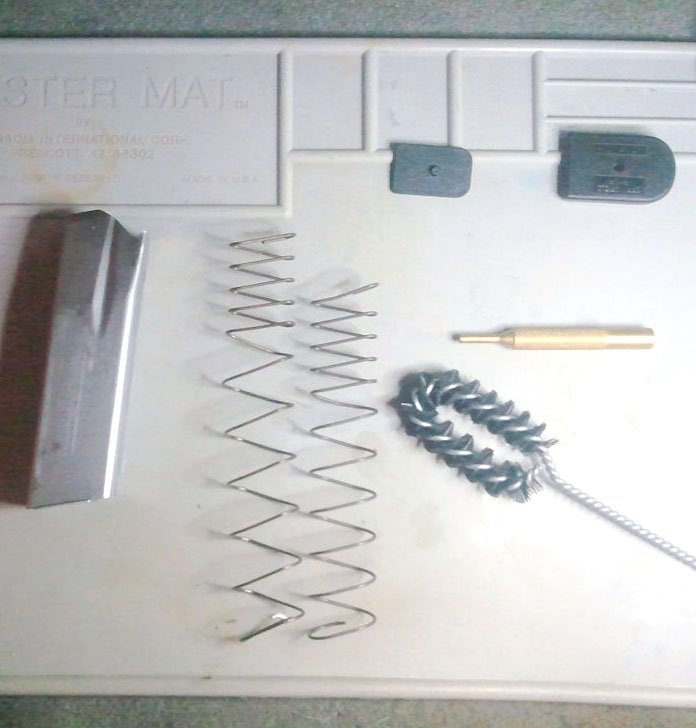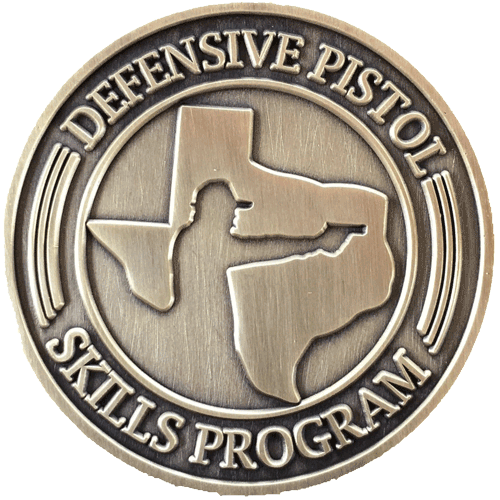Magazine Spring Tips
General advice on magazines and magazine springs: at least once a year, take your magazines apart. (Those that shoot competition or drop magazines on the ground during defensive handgun skills training should do this much more often.) Clean the insides of the tubes with a brush or a rag, wipe off the followers and other plastic parts, and check the magazine spring length against a new spring. You should keep at least one new magazine spring in your range bag. Brownells.com is a great source for buying magazine springs for most handgun models. The photo below shows an example of a worn out mag spring - it's shorter than a new spring by several coils. Time to replace that spring.

Number your magazines. One easy way to do this is to buy pre-cut, numbered grip tape from Dawson Precision and stick them on your base pads. If you number your magazines, when you have a malfunction, you will know what magazine it occured with, and you should run that magazine some more and watch for that same error, and/or take it apart and clean it and check the spring. We recommend having 5-6 magazines for your gun, so you can use some for practice and some for carry (and match day). If you own a lot of magazines, you can pre-load them all at home, so when you get to the range, you just get out of the car and get right to practicing without spending a bunch of time standing around loading magazines. That's particularly useful when you are paying by the hour for range time!
One more tip on magazines: the more ammo the magazine holds, the more pressure the spring is under. Downloading your high capacity magazines (by 1 round, for mags that hold 11-20 rounds, by 2 or more rounds, for mags that hold more than 20 rounds) can really make a difference in reliability. The #1 problem that occurs with an overloaded magazine is difficulty seating the magazine when you have a round in the chamber (as in a "speed reload").
Next time you are on the range, try this: with a round already in the chamber, eject the mag. Load it to 100% capacity and try to seat the mag. Eject the mag. Take one round out, and try to seat the mag. The difference in seating pressure should be very noticeable. Under time pressure, the odds that you'll fail to seat the 100% full mag hard enough increase. I've seen quite a few shooters flub a "speed reload" to a full mag this way. What happens is the mag goes on but does not lock in. They fire one round (the one in the chamber), and the mag drops out. Also, it can sometimes be difficult to strip that first round out of the 100% full mag, and that can cause feeding problems. Since I started running my high capacity magazines downloaded by 1, I haven't had a mag drop out on a reload or have a 1st round feeding problem - none in the past 10+ years.

